A fire has been burning since mid-July in the remote wetlands of west-central Brazil, leaving in its wake a vast charred desolation bigger than New York City.
A team of veterinarians, biologists and local guides arrived in late August to prowl the bumpy dirt road known as the Trans-Pantanal Highway in pickup trucks, looking to save what injured animals they could.
Jaguars were wandering the blackened wasteland, they said, starving or going thirsty, with paws burnt to the bone, lungs blackened by smoke.
They saw bodies of alligator-like caiman, jaws frozen in silent screams, the last act of creatures desperate to cool off before being consumed by flames.
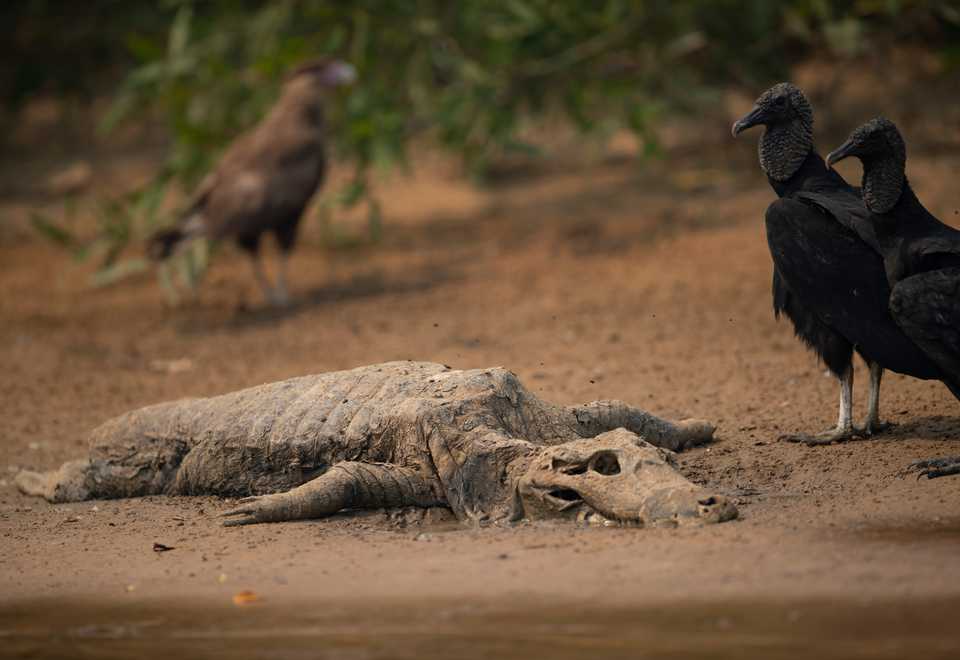
This massive fire is one of thousands of blazes sweeping the Brazilian Pantanal, the world’s largest wetland, this year in what climate scientists fear could become a new normal.
The Pantanal is smaller and less-known than its famous cousin, the Amazon jungle.
But the region’s normally abundant waters and strategic location, sandwiched between the rainforest, make it a magnet for animals.
The fires are now threatening one of the most biodiverse ecosystems on the planet, biologists say.
The Pantanal is home to roughly 1,200 vertebrate animal species, including 36 that are threatened with extinction.
The biggest fires in the Pantanal this year are quadruple the size of the largest fire in Brazil’s Amazon rainforest, NASA satellites show.
A record of nearly 16 percent of the Brazilian Pantanal has been burned through September, according to a Federal University of Rio de Janeiro analysis.
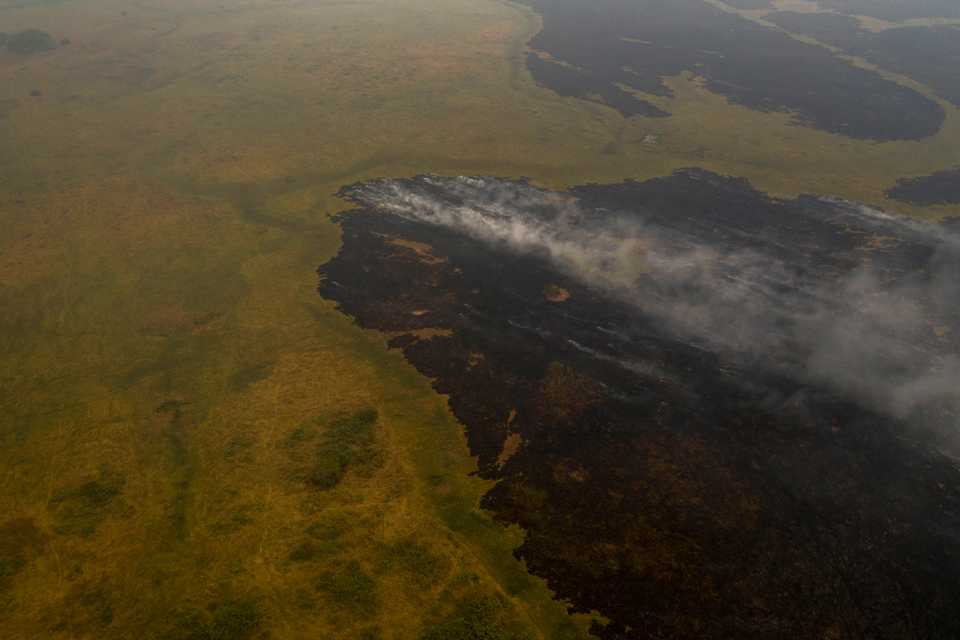
The Pantanal is known for being wet, not dry.
The world’s largest flood plain normally fills with several feet of water during the rainy season from around November to April each year.
Scientists blame the drought on warming in the Atlantic Ocean just above the equator that’s drawing moisture away from South America and will send it north, likely in the form of stronger hurricanes.
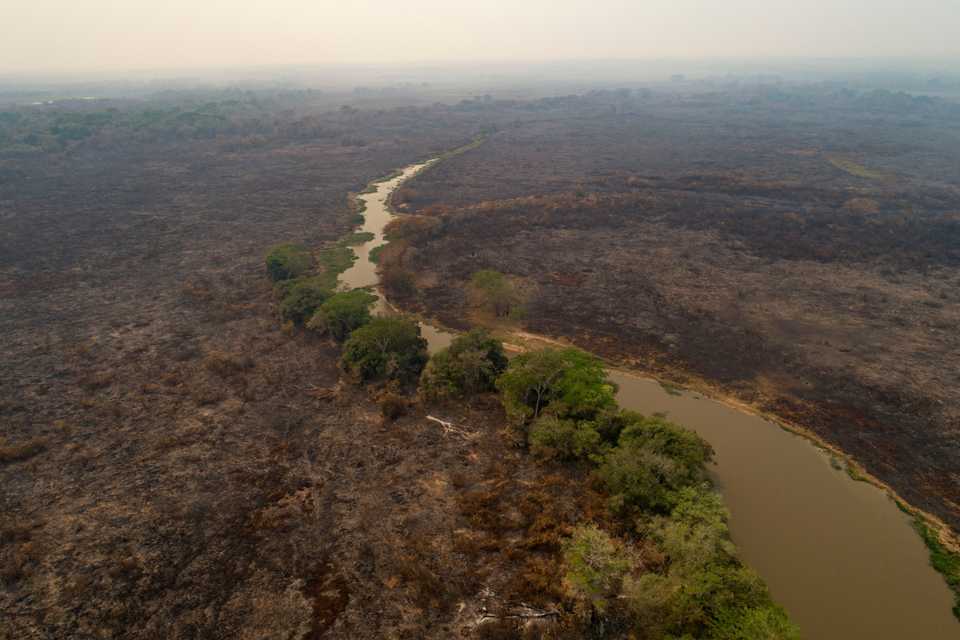
When it runs hot, as it has been since the 1990s, the warming in the tropical North Atlantic is more likely to occur, contributing to South American droughts and fires.
Amazon deforestation has surged 34.5 percent in the 12 months through July, compared to the same period a year ago, according to preliminary data from government space research agency Inpe.
Under far-right President Jair Bolsonaro, Brazil has also weakened environmental enforcement.
Environment Minister Ricardo Salles visited the Pantanal in August, saying that federal environmental agencies had sent five aircraft and additional workers to assist the more than 100 state firefighters battling the blazes.
“The fires are causing great damage to fauna, flora and to the Pantanal region,” Salles said.
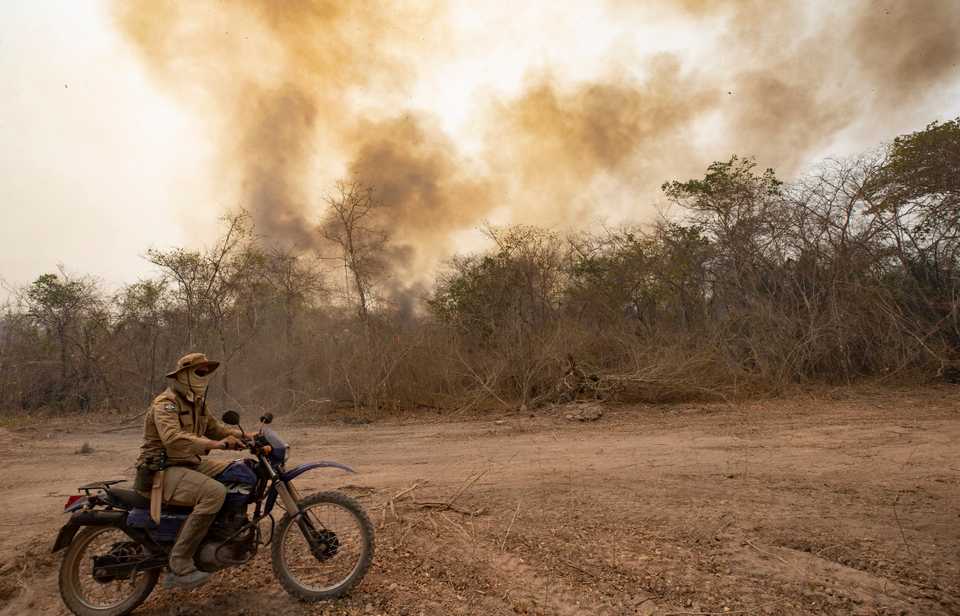
No humans have died in the Pantanal fires, according to Mato Grosso state firefighting Lieutenant Colonel Jean Oliveira, who has been leading all government agencies in the fire response.
Separately, local media on Thursday reported one fatality in the state.
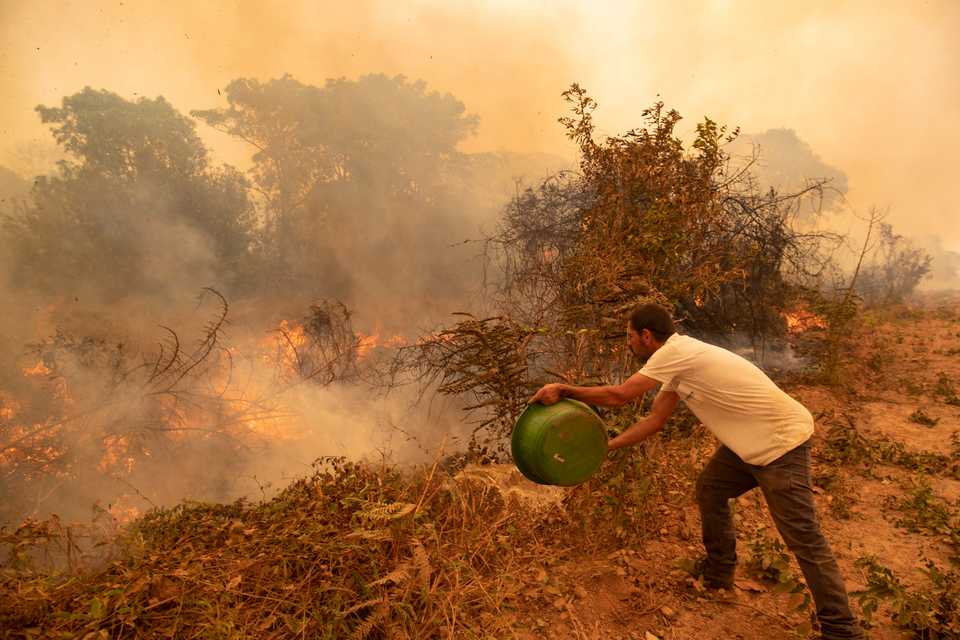
Wildlife, meanwhile, has been hit hard, Oliveira said.
While there aren’t exact counts, at a minimum thousands of animals have perished, according to biologist Rogério Rossi at the Federal University of Mato Grosso.
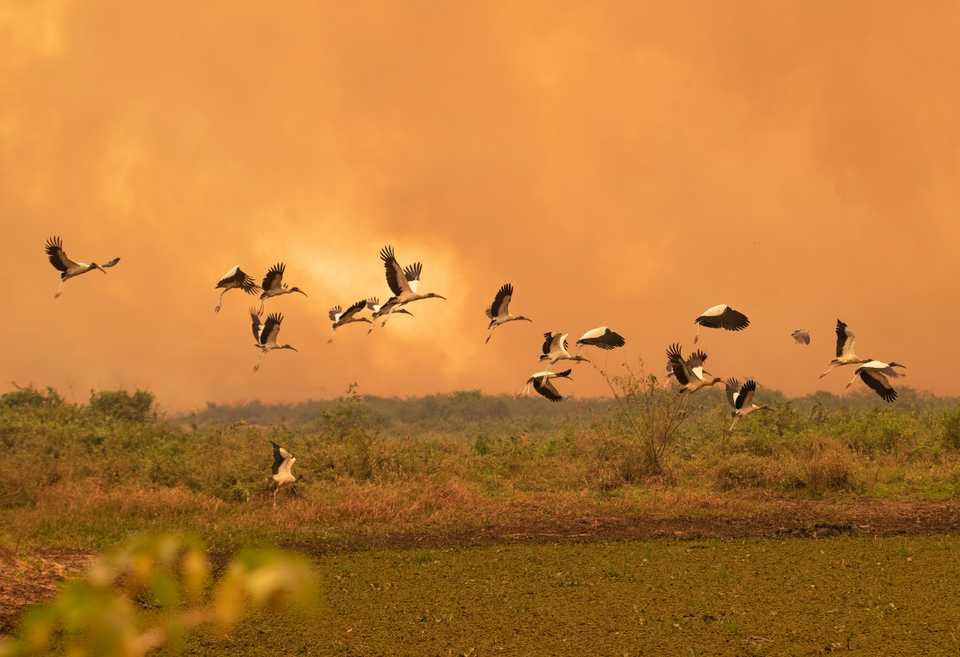
In the burned expanse of 520 square miles near the town of Poconé, dead snakes are seen every few metres.
Local guide Eduarda Fernandes, who is working with the rescue team, wandered the area, feet sinking into the deep soot.
Asked what she thought happened, Fernandes responded “pain, despair”.
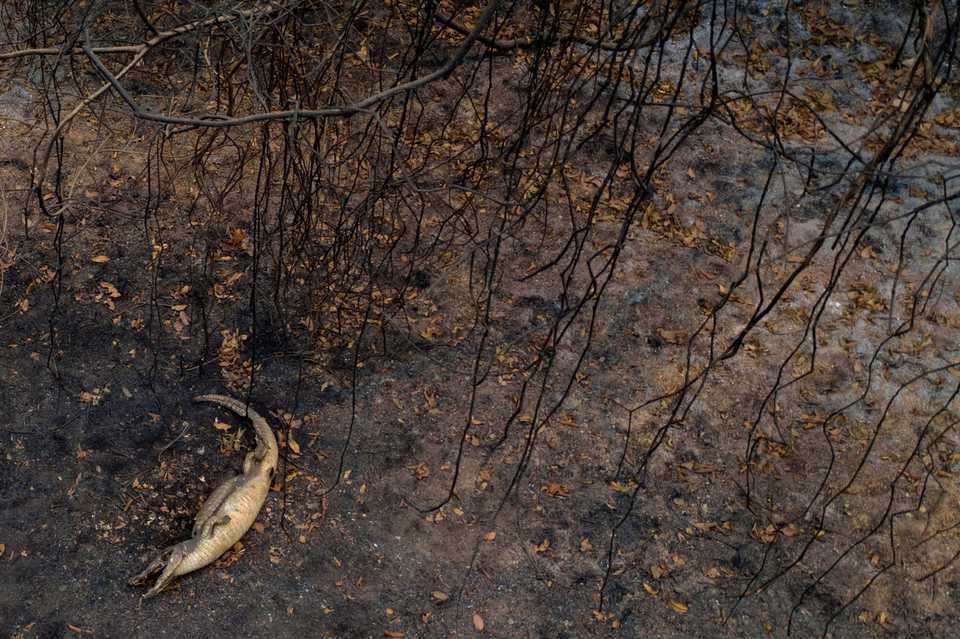

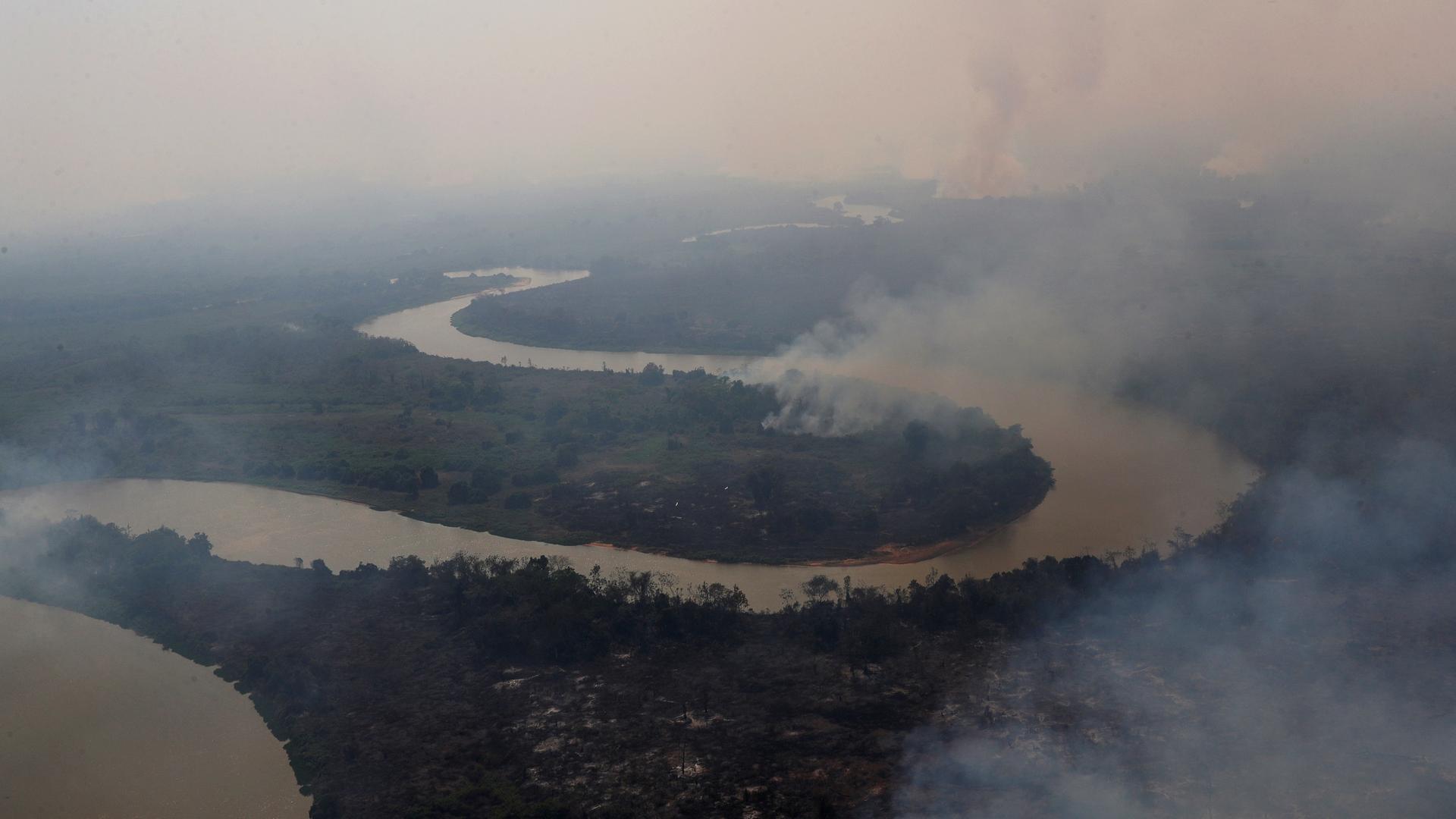








Discussion about this post